
“The


“The


By Lori Tobias CEG CORRESPONDENT
Seattle-Tacoma International Airport celebrated its most recent construction milestone in December when Turner
Construction and Apex Steel guided into place one of the final steel beams atop the expansion project’s highest point. In about 18 months, passengers at Sea-Tac can expect to enjoy a renovated Concourse C nearly tripled in size with a “wish list” of amenities.
Those include new dining and retail options and a Pacific Northwest-inspired gathering place anchored by the “tree at C” and even bleachers.
“The tree is real wood,” said Janet Sheerer, the capital pro-
gram leader, C Concourse expansion. “That was an important feature. Our design team really wanted to bring the outdoors in. Having that Pacific Northwest sense of place is actually part of our architecture design standard.”
The $400 million project will add about 145,530 sq. ft. to the existing 81,000 sq. ft., along with four new stories, raising the concourse building to seven stories and making it the tallest building at the airport.
According to the website, “The topping out milestone is commonly celebrated in construction projects around the world and is part of an ancient Scandinavian tradition that celebrates the work and effort of those who worked on construction of the building.”
Everyone involved in the project was invited to the cere-
mony and invited to sign the beam, Sheerer said.
“Our contractor made a speech about the tradition of the topping out ceremony, which is a really old tradition. The ironworkers were all there, and they’re the ones really celebrating what a major achievement it is for them to get to that highest point on the building,” she said. “So, they put a Christmas tree on it and an American flag on it and raised it by crane to the tippy top point and loaded it into place. Everybody took a little bit of a break and celebrated the milestone, which something we always want to make sure we take the time to do. It was pretty wonderful.”
One of the major challenges on the project has been
see AIRPORT page 11
























































Oregon’s aging bridge inventory is a growing concern for the Oregon Department of Transportation’s (ODOT) Bridge Program, in particular the Interstate Era bridges.
ODOT’s 2024 Bridge Conditions Report spotlights Interstate Era bridges built between 1958 and 1973. During this span, ODOT built, on average, 63 bridges a year, due to funding provided by the National Interstate and Defense Highway Act. Today, these bridges are between 50 and 65 years old.
“Much of our transportation infrastructure is aging and nowhere is this more apparent than with Oregon’s bridges and pavements,” ODOT Director Kris Strickler said. “We do our best to preserve and repair our bridges as replacing them is costly. We face a growing backlog of bridge preservation needs caused by the structural revenue issue facing transportation agencies across the nation. ODOT is working with our partners to identify sufficient and sustainable funding that would allow us to fund our critical core services including preserving our bridges, maintaining our transportation system, and making travel safer for all Oregonians.”
The 2024 report was presented to the Oregon Transportation Commission in mid-March.
ODOT inspects bridges over a two-year cycle and summarizes bridge condition ratings on state highways based on National Bridge Inventory (NBI) and ODOT data. NBI ratings look at the major structural components of a bridge (deck or driving surface, superstructure and substructure (base), or culvert rating), deficient bridge classification and structural condition rating.
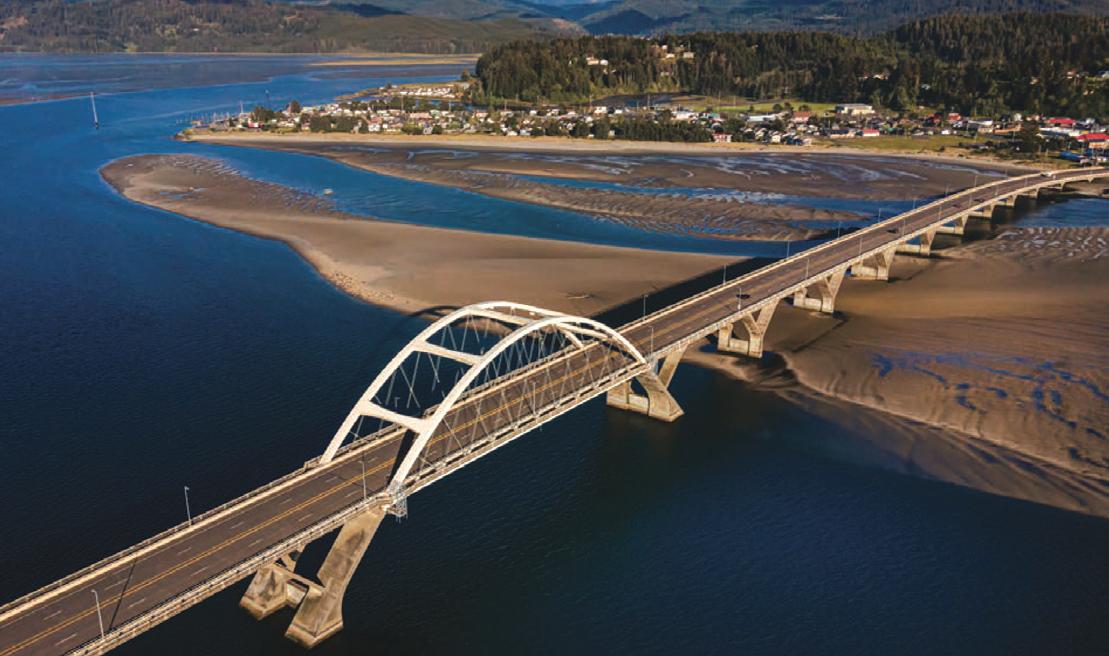
ments prevent future damage and keep the bridge performing well. Maintenance activities encompass a wide range of treatments that are delivered at every stage of the bridge’s life cycle, such as fixing unexpected damage.
A significant portion of state-owned bridges are still in fair condition due to regular maintenance. However, much like maintaining a car, continuing to make expensive repairs on bridges nearing the end of their lifespan becomes less costeffective and practical.
The normal lifespan of a bridge is between 75-100 years and 60 percent of the inventory was built before 1973. In the foreseeable future, there will be more than 1,000 Interstate Era bridges that must be replaced. However, current funding levels pay for, on average, only three bridge replacements annually. At this rate, an Oregon bridge will need to stay in service for more than 900 years, well beyond the expected service life.
With more than 2,700 state highway bridges across Oregon that vary in size, age, type and condition, the state’s needs are outpacing resources. ODOT will continue to focus on maintaining the bridges through preservation and maintenance work to ensure the aging bridge inventory remains safe.
Compared with other western states, ODOT has the most bridges in fair condition. To keep bridges in fair condition or better, ODOT performs both maintenance and preservation activities. Effective bridge preservation actions are intended to delay the need for costly reconstruction or replacement by applying preservation strategies to bridges while they are still in good or fair condition and before the onset of serious deterioration. Bridge preservation encompasses preventive maintenance and rehabilitation activities.
Preservation activities include lubricating bearings, sealing concrete and deck joints and painting steel. These treat-
ODOT also considers the bridge’s environment. For example, the coastal climate is different than the central Oregon climate. Bridges exposed to salt air require different treatments than bridges in snow zones. In addition, older bridges have a different maintenance routine than newer bridges.
• ODOT owns and maintains 2,781 bridges.
• Sixty percent of state-owned bridges in the National Bridge Inventory were built before 1973.
• In 2024, ODOT completed 1,331 state-owned bridge inspections.
• ODOT paved 35 bridge decks, repaired six bridges in poor condition and addressed 63 other bridges with high-priority maintenance needs.
• ODOT assessed 130 bridges for load rating in 2024 and placed new or revised restrictions on 11.
ODOT’s Seismic Program continues to make seismic improvements to bridges along high-priority routes. Several projects are either under design, construction or were recently completed. These projects will offer seismically resilient highway corridors that can save lives and help the Oregon economy recover after a major seismic event.
Recently completed seismic work as part of the U.S. 97 / OR 58 Bridge Retrofits:
• Pelican City Bridge (U.S. 97 over Lakeport Blvd & UPRR)
• South U.S. 97 over Nevada Avenue.
• South U.S. 97 over United States Bureau of Reclamation Canal
• Green Springs Interchange (U.S. 97 over Oregon 140)
• South U.S. 97 over Klamath River
The final two bridges in this project are expected to be completed by summer.
The Southern Oregon Seismic Bridge Retrofit project, funded by HB 2017, is testing the buckling restraint bracing system, which has proved to be a cost-effective retrofit method for bridges with multi-column supports.
This project is divided into four separate projects. The second project addressed seismic vulnerabilities of five bridges on I-5, which are all complete. The third project addressed five bridges on Oregon 140 and is complete. The fourth project replaces three bridges on Oregon 99, with two of these projects completed in 2024. The third bridge is expected to be completed this summer.
Many more seismic retrofit priority route projects are in the works statewide, including the Abernethy Bridge near Oregon City and the Van Buren Bridge in Corvallis.
For more information, visit oregon.gov/odot/Bridge/ Documents/2024BCR.pdf.

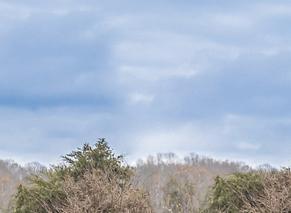



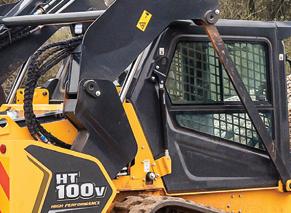









Loved for the features. Trusted for the performance.

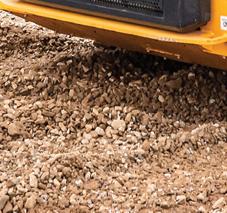


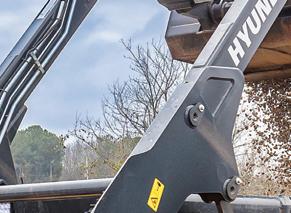
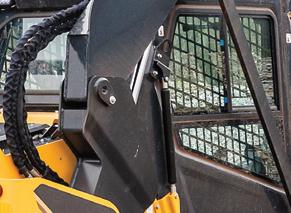



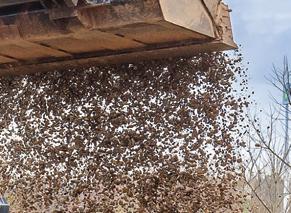




Do more without feeling like it in Hyundai’s easy to own, easy to operate, skid steer and compact track loader.
Standard features include:
• LED front and rear work lights
• Auto leveling bucket
• Ride control
• Review camera
• Two speed travel
• AM/FM bluetooth radio
• Free Hi MATE telematics access for 5 years

wonder so many first-time Hyundai users become longtime fans. See the Hyundai difference yourself at your local dealer, or na.hd-hyundaice.com









Industry professionals gathered for three days of networking, education and social activities at the 87th Annual Oregon Logging Conference (OLC) from Feb. 20-22, 2025, at the Lane Events Center and Fairground in Eugene. This year, there were more exhibitors, both inside and outside, and greater attendance at the OLC.
“The 2025 conference was excellent,” OLC President Jayme Dumford said. “The show continues to grow and has become the place to be for industry professionals.”

Saying it was an honor to be invited and share his message with the OLC, keynote speaker Chris Evans, president of Timberlab of Portland, Ore., talked about the environmental advantages of using mass timber building materials rather than concrete and steel. He said using mass timber instead of concrete and steel will result in a 60 percent reduction in greenhouse gases.
“Using wood helps reduce carbon emissions,” Evans said. “If you put this product into a building where it’s going to be stored for 100 years, that really is a deferment of having that carbon released into the atmosphere.”
Evans also said the typical mass timber building is half the weight of a concrete building.
“It’s hard to fathom how much a building weighs when you look at it, but when you think about the impact that has to the local community, as that building is being built, that’s half the trucks on the road,” he said.
More than $30,000 was raised at the 21st annual Desserts for Dreams luncheon on Feb. 21 at the Graduate by Hilton Eugene hotel. It was the most successful of the events since it began in 2004.
OLC First Lady Maria Dumford selected Every Child Lane County as this year’s charity to benefit from the annual fundraiser. Every Child Lane County is a nonprofit that assists children and families in the foster care system.
“Dessert for Dreams was an overwhelming success with the largest attendance ever,” Dumford said. “Thank you to everyone who came and gave generously.”
More than 700 students, educators and industry professionals participated in the 7th Annual Future Forestry Workers Career Day, held on Feb. 21 in conjunction with the Oregon Logging Conference.
High school students from more than 32 Oregon schools attended the interactive and hands-on career day, learning about logging, forestry, reforestation, sawmills, wildland firefighting, diesel mechanics and operating heavy equipment.
One of the activities at Future Forestry Workers Career Day was the high school forestry skills relay.
With 100 students from 12 Oregon schools competing, Waldport High School teams took first and second places,
finishing within seconds of each other. Third place was captured by La Pine High School, and Taft High School took fourth place.
The teams competed against each other in the four-skills relay, which included hose lay, choker setting, crosscut sawing and chainsaw use.
Demonstrating their skills at operating a 4040-B LinkBelt forestry excavator/log loader, the top three winners in the 15th Annual Oregon Logging Conference Log Loader Competition were within 20 seconds of each other.
First place was Jeremy Staats of Bryant Logging with a time of 3:24:44. Second place was Bryan Chipps of Green Diamond Resource Co. at 3:35:91 and third place was Layne Walker at 3:43.16.
Oregon Logging Conference attendees gave their guesses for the net scale of two loads of logs, with the winner of each receiving a $250 Cabela’s gift card.
The winner of the load of alder chip and saw logs was Thomas Fox of Ethel, Wash. He was within 10 ft. of the total of 4,690 board ft.
The net scale of the load of logs was 6,660 net. Jack Miller from California guessed it to the foot.
Forest families and other members of the public turned out on Feb. 22 to build wooden birdhouses just outside the Wheeler Pavilion. Popular Family Day activities included live wildlife, free seedling giveaways, face painting, balloons, art projects and other hands-on forestry-related opportunities.
“The final day of the conference is an opportunity for families to attend the OLC and for the public to learn more about who we are and what we do and meet many of the professionals who make their living in our industry,” said Rikki Wellman, OLC manager.
The 88th Annual Oregon Logging Conference will be held Feb. 19-21, 2026. For more information, visit www.oregonloggingconference.com.
Washington state’s transportation budget faces a multi-billion-dollar shortfall in the coming years, according to theolympian.com, which could delay projects.
State Sen. Marko Liias, who chairs the upper chamber’s transportation committee, estimated the transportation deficit at $4 billion over the next six years.
Liias told theolympian.-com that the problem stems from declining gas taxes. Meantime, costs have increased faster than inflation, in part because of the pandemic and supply chain difficulties.
“The cost of building or repairing a mile of roadway has gone up much faster than the cost of groceries and other things we’ve seen,” Liias said. “Because of the way we fund transportation, revenue is declining.”
More fuel-efficient and electric cars have contributed to the gas tax revenue, along with employees telecommuting more frequently, theolympian.com reported.
Liias said the shortfall on the $15 billion budget over the next two years will reach $1 billion, according to theolympian.com.
“If we want to close the gap in the budget over six years, it may mean pausing a project,” Liias said.
Liias said projects that could be disrupted include Interstate 5 improvements at Joint Base Lewis-McChord. In Tacoma, the Puget Sound Gateway connecting the Port of Tacoma to Highway 167 could be paused, as could ongoing work in Fife, at Snoqualmie Pass and the North Spokane Corridor.
Liias told theolympian.com that recalibrating the gas tax to account for inflation could be a solution.
“It could be different funding tools; [House Transportation] Chair [Jake] Fey has proposed a road-usage charge,” he said. “It also could be other fees, or it could be tolls. There’s a number of things we could use that would help folks, as they use the system, contribute to its upkeep.”
But Liias wants to see Washington continue with the usemore, pay-more model, where those who use the roads more pay more, according to theolympian.com.
“I think that basic fairness is a principle that we want to continue to rely on,” he said.
Washington’s transportation leaders also worry about federal government challenges.
Liias told theolympian.-com that federal funding might be at risk, citing the I-5 bridge replacement across the Columbia River between Portland and Vancouver. About $2 billion in federal grants are earmarked for the project.
In addition, proposed tariffs by President Trump could add to costs. Liias said that much of Washington’s transportation infrastructure depends on outside materials. Tariffs on goods from China, Canada and Mexico could prove problematic.
Another factor, Liias told theolympian.com is that the state must invest in its existing, aging infrastructure. He said the state now funds less than half of its preservation needs.
Liias touted a bill that recently passed the state Senate that would allow for partnerships with private companies, thus hastening transportation project delivery. The idea’s been used in other states.
“In transportation, time is money,” Liias told theolympian.com. “The faster we build projects, the lower we’re exposed to inflation and those cost uncertainties.”



The Idaho Transportation Department will accelerate the construction of multiple interchanges along State Highway 16 in the central Treasure Valley with Leading Idaho funds. The entire corridor is expected to open by 2027, a year earlier than planned.
The new SH-16 corridor will be the area’s first new freeway in more than four decades, extending between Interstate 84 and State Highway 44. Access on and off the highway will be limited to interchanges at I-84, Franklin Road, Ustick Road, U.S. Highway 20/26 and SH-44.

“ITD is able to accelerate these interchanges due to a number of factors, including additional funding and efficient management,” District Engineer Jason Brinkman said. “We are very proud of the work that has been accomplished, and we are confident this project will improve the mobility for large parts of Ada, Canyon and Gem counties.”
With the accelerated schedule, construction will take place in multiple areas along the project. Starting Feb. 10, 2025, work at the US-20/26 interchange will require extended nighttime detours. Traffic on US20/26 will be detoured from 7 p.m. to 5 a.m. for three weeks to allow crews to safely place 12 steel girders — each weighing 83,000 lbs. — across the roadway for the interchange bridge.
This spring, work will begin to expand the I-84 and SH-16 Interchange and construct a new interchange at Franklin Road. Work on the US-20/26 and Ustick interchanges is already under way, while construction at the SH-44 Interchange is expected to begin by fall 2025.
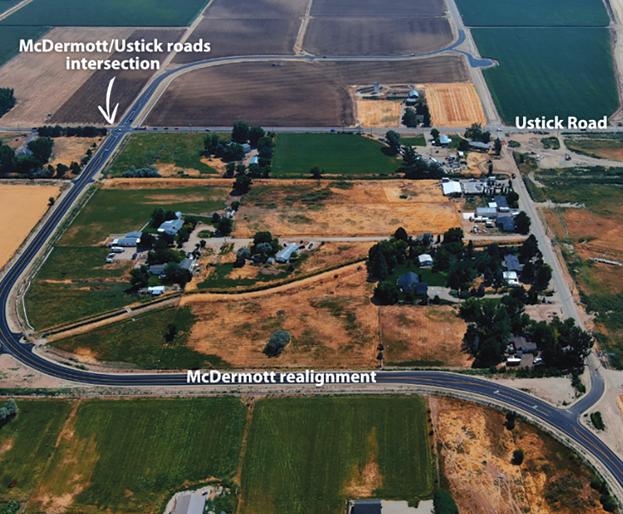
McDermott Road was realigned east of State Highway 16 at Ustick Road. The new alignment will make room for the widening of Ustick Road and the new turn lanes to and from SH-16.
Contech Engineered Solutions built 57 girders and the retaining wall for the I-84, SH-16 interchange. Contech also is constructing girders for the Simco Road Bridge near Mountain Home and the bridge under SH55 in the Avimor development.
The first phase was completed in 2014 between US20/26 and SH-44. The second phase began in 2022 and has included constructing the mainline highway, part of the I84 Interchange, and many overpasses and local road adjustments.
The final phase of this project was accelerated when additional funding became available through the Idaho Transportation Expansion and Congestion Mitigation (TECM) bonding program. These funds are a deliberate investment to allow ITD to accelerate project timelines to
address rapid growth and build critical infrastructure today that would otherwise take many years to build.
The project’s planning has taken years, according to boisedev.com, with an environmental impact statement completed by 2011. A first phase, which cost $102 million, extended SH 16 south by 2 miles from State Highway 44 to U.S. 20-26. That work was completed in 2014.
The latest phase of construction started in 2022, with funding for the design costing $25 million, right way acquisitions totaling $86 million and construction costing $253 million, according to boisedev.com. The final phase will cost approximately $276 million.
(All photos courtesy of the Idaho Transportation Department.)
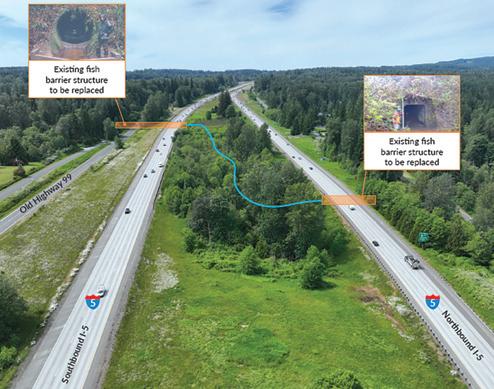
The Washington State Department of Transportation (WSDOT) began construction in February 2025 of new fish passable structures on both northbound and southbound Interstate 5 at Secret Creek north of Arlington in Snohomish County.
During construction, both northbound and southbound I-5 traffic will be shifted to a two-lane temporary bypass for nine months with construction expected to be complete in 2026. In 2026, construction will move to Old Highway 99 which will be closed for six months during which time traffic will be detoured onto I-5.
WSDOT and its contractor, Granite, will remove existing fish barriers under Interstate 5 and Old Highway 99 near Stanwood and replace them with three new steel arch structures to improve fish passage. Granite was awarded a $48 million contract in May 2024 for the project.
The new crossings will restore access to more than 5 mi. of stream habitat. When rivers and streams reconnect, fish can better access the habitat they need to reproduce, access food resources, escape predators and find refuge from high winter stream flows. Fish passage restoration efforts are key to rejuvenating ecosystems and bolstering climate resilience.
The location is part of a wildlife corridor home to several species of animals, including deer, coyotes, bobcats and beavers. The project’s large culverts promote safe wildlife connectivity across NB and SB I-5 and Old Highway 99. This not only protects valued wildlife resources but also improves traveler safety by limiting the potential for vehicular conflicts with wildlife.
The new culverts will be 68 ft. wide and range from 50-70 ft. long. Crews will also restore about 2,000 ft. of creek channel, starting west of Old Highway 99, running through the I5 median and extending to the east side of northbound I-5.
This project is estimated to open nearly 5 mi. of habitat, benefiting salmon, steelhead and other aquatic and wildlife species.
This $57.5 million project is funded by the Move Ahead Washington transportation funding package.
For more information, visit wsdot.wa.gov/constructionplanning/search-projects/i-5-secret-creek-fish-passage. (Photo courtesy of Washington State Department of Transportation.)




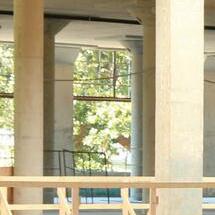




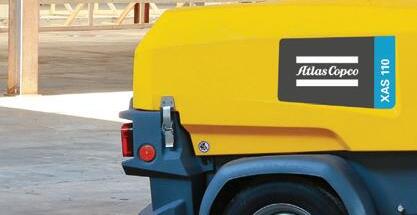





adding to the existing structure while it is still occupied, said Adam Olson, capital program manager, C Concourse expansion. “The primary space is on the lower level where we still have airport dining and retail storage. We had to go into multiple places there and drill piles, micropiles. So, we had to upgrade the existing foundation in a lowceilinged area with people around and figure out how to make that safe and how to make it make it doable.”
The other challenge came in adding “deep” foundations and stairwell foundations outside the building footprint.
“At an airport that’s been around this long, there’s always stuff in the ground that you weren’t anticipating, including fuel from years ago and dirty soil that no one was aware of, or of lines that are being used still that no one knew, and we have to relocate,” Olson said.
While those finds added new challenges, they also are not unexpected, and contractors generally have plans in place for handling and disposing of the fuel and soil.



“We have it built into the schedule to some extent,” Sheerer said. “But again, if you don’t know exactly when you’re going to find it, you’re really kind of relying on the contractor to be pretty flexible. If they find something, they're going to want to stop work in that location and go to work on another location. It’s always kind of frustrating when it has to happen, but the way they phase the project allows them to react pretty quickly.”
The project, a steel structure with a concrete slab on a metal deck, features numerous sustainable components, including electrochromic glazing on the south facade of the building that tints the glass under certain conditions like bright sun. The new Concourse C also will be the first building at


























Sea-Tac to feature solar panels on the roof.
“One of the other sustainability features are air source heat pumps — electric heat pumps,” Sheerer said. “In the building itself, we’re not using any natural gas or fossil fuels to condition the building. That’s a big sustainability thing for us. Our dining tenants are not going to be using fossil fuels, which would probably be natural gas for cooking or heating. They have to buy special equipment.
“We’ve tried to be very transparent that that’s what they’re going have to come in and do. We had a good response to the RFP when they were put out. So, if you look at it from that standpoint, I think it was pretty well received.”




The project is scheduled to be largely completed by May 2026.

